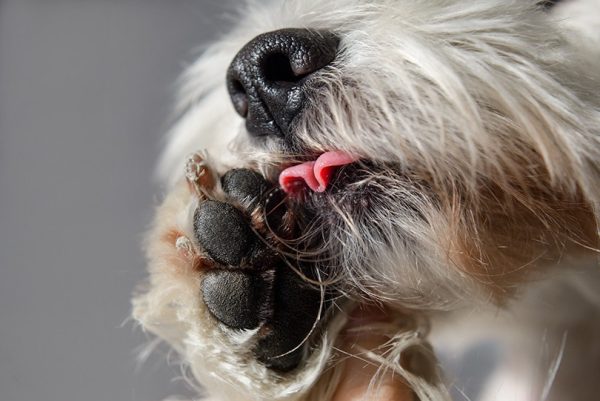In this article
View 8 More +The expressive face and loving temperament of the Pug have made this breed a favorite among humans. These flat-faced pups make wonderful pets for a variety of lifestyles, but they can be prone to serious medical conditions, especially in backyard breeding and irresponsible breeding situations. Because of this, it’s important to familiarize yourself with all of the pros and cons of the noble Pug before bringing one home.
Breed Overview
Height:
10 – 13 inches
Weight:
14 – 18 pounds
Lifespan:
13 – 15 years
Colors:
Black, fawn
Suitable for:
Families looking for a house dog, households in moderate climates, seniors
Temperament:
Charming, sweet-natured, comical, loving
At first glance, the Pug may appear to be a high-maintenance little dog, but this breed is surprisingly muscular, active, and attentive. Pugs are excellent companions who love to spend time with their people, whether it’s on the couch or out for a walk. They’re excellent dogs for homes with children of all ages, thanks to their patience and adaptability. When you bring home a Pug, you’re bringing home a dog that will provide you with no shortage of laughs and affection.
Pug Characteristics

Pug Puppies

Pug puppies are irresistibly cute! They have a sweet and playful temperament without being excessively energetic. They’re more trainable than many other small dog breeds, but early socialization is important. It’s also important to commit to training your Pug while they’re still young. With small dogs, some people are lenient in their training, leading to poorly behaved adult dogs.
Because of their cute appearance and personality, Pugs are a popular breed with backyard breeders and puppy mills. Poor breeding practices have led to a decrease in the length of the Pug’s snout, leaving it essentially flat. These breeding practices have resulted in a variety of health conditions becoming common in the breed, so it’s extremely important for you to find a reputable breeder with health-tested breeding dogs.
Pug Breed Origin & History
The Pug is a very old dog breed, having been developed around 2,000 years ago! This breed was developed in ancient China around the same time as its flat-faced cousins, the Shih Tzu and Pekingese. Pugs were initially considered dogs of royalty and nobility, and for anyone outside of China to own one was a great honor because it meant they had been gifted the dog by someone of great importance.
In the 1500s, Dutch traders brought Pugs to Europe, where the breed became the mascot of the House of Orange in Holland after a Pug notified the Prince of Orange of an impending attack. The breed exploded in popularity after William and Mary of Orange took the throne in England.

Temperament & Intelligence of the Pug 🧠
The Pug is an even-tempered dog that is highly adaptable and sociable. Because of their goofy personalities, many people underestimate the intelligence of the Pug, but this is an intelligent breed. Pugs are trainable dogs that bond closely with their people, making them more willing to learn.
Are These Dogs Good for Families? 🏡
Yes, Pugs are considered to be great family dogs. They are patient and gentle with children, making them suitable for homes with children of all ages. However, it’s important for children to understand the boundaries of this breed.
Because of their flat faces, Pugs are at risk for respiratory problems, and being over-exercised, trapped in a small space, or exposed to extremely hot or cold temperatures can result in respiratory distress and even death.

Does This Breed Get Along With Other Pets? 🐶 😽
Pugs make excellent pets in multi-pet households, but proper socialization and safe introductions are necessary. Because the Pug was not bred for hunting or any other type of work, it does not have a strong prey drive or instinctual desire to do a specific task, so they tend to get along well with other pets, including cats.

Things to Know When Owning a Pug
Food & Diet Requirements 🦴
A high-quality dog food formulated for small dogs is ideal for Pugs. This breed is prone to obesity, and because of their small size, it’s easy to overfeed them. Obesity can not only lead to multiple medical conditions, but it can also make it more difficult for your Pug to breathe properly.
It’s essential to the health of your Pug that they maintain a healthy body weight. If you’re struggling to control your Pug’s weight, then you need to talk to your vet about options. They may need a vet-guided diet to help them.

Exercise 🐕
Although Pugs aren’t high-energy dogs, they do need exercise every day. They are typically content with going for a walk around the neighborhood or playing games in the yard. Some pugs love to go on adventures and participate in activities, though. Pugs can be excellent competitors in competitions and trials, like agility and obedience.
Training 🦮
Just because Pugs are small dogs doesn’t excuse them from needing training. Not training your dog is doing them a disservice and setting them up to fail behaviorally. Pugs are intelligent and trainable dogs, so there’s no reason not to provide them with training. A consistent training schedule with positive reinforcement is the ideal way to train your Pug.

Grooming ✂️
Pugs have a short coat that requires minimal maintenance, but this is a moderate to high-shedding breed. Brushing your Pug weekly will reduce how much hair they shed in your home, but you should still expect to find Pug hair everywhere. Routine bathing can help to reduce loose hair in your dog’s coat, which will help reduce shedding as well.
Keep your Pug’s nails trimmed short to prevent breakage and injuries to the feet. Pugs are notorious for being bad about nail trims, so make sure to desensitize your Pug to having their feet touched and nails trimmed from a young age.
Health and Conditions ❤️
- Skin fold infections
- Ear infections
- Allergies
- Demodectic mange
- Dental disease
- Retained baby teeth
- Brachycephalic obstructive airway syndrome (BOAS)
- Collapsed trachea
- Canine degenerative myelopathy
- Eye ulcers
- Patellar luxation
- Cancer
- Hip dysplasia
- Diabetes
- Obesity
Male vs. Female
Male pugs tend to be larger and heavier than females, but these size differences may not be overly noticeable due to the small size of the breed. When it comes to personality, males tend to be more affectionate and sweeter, while females are likely to be more independent. In some cases, males may also be more confident and energetic, while females may be a little less outgoing and more relaxed.


3 Little-Known Facts About the Pug
1. They Were Bred for Affection
Many dog breeds were developed with specific functions in mind, including the Pug. However, the Pug wasn’t developed for hunting or herding. This breed was developed specifically to be a lapdog. Their original purpose was to sit in the laps of Chinese emperors and nobility.
2. The Face Wrinkles Are Intentional
When the Pug was being developed, early breeders intentionally bred the dogs with notable face wrinkles. The initial purpose of these face wrinkles were because of how closely they resembled the Chinese character for the word “prince,” making them reflective of the breed’s connection to royalty.
3. They’re Popular With Famous People
Many famous people in history and modern times have owned Pugs. The House of Orange owned many Pugs, along with Napoleon’s wife, Josephine, who owned a Pug by the name of Fortune. The story of Fortune is that he bit Napoleon on the night of his wedding to Josephine because she refused to kick the dog out of the bed. Other famous people who have owned Pugs include Queen Victoria, Harriet Beecher Stowe, Rob Zombie, Valentino, Gerard Butler, Jessica Alba, Tori Spelling, Paris Hilton, and Hugh Laurie.

Final Thoughts
Pugs are an irresistible dog breed because of their wonderful temperament and adorable appearance. However, this breed has been irresponsibly bred for decades now, which has resulted in a significant drop in the health of the breed. Many Pugs suffer from a whole slew of medical conditions because of poor breeding, which proves the necessity of responsible breeding practices, routine health testing, and careful selection of breeding dogs.
- See also: Leucistic & Albino Pugs
Featured Image Credit: MVolodymyr, Shutterstock


















